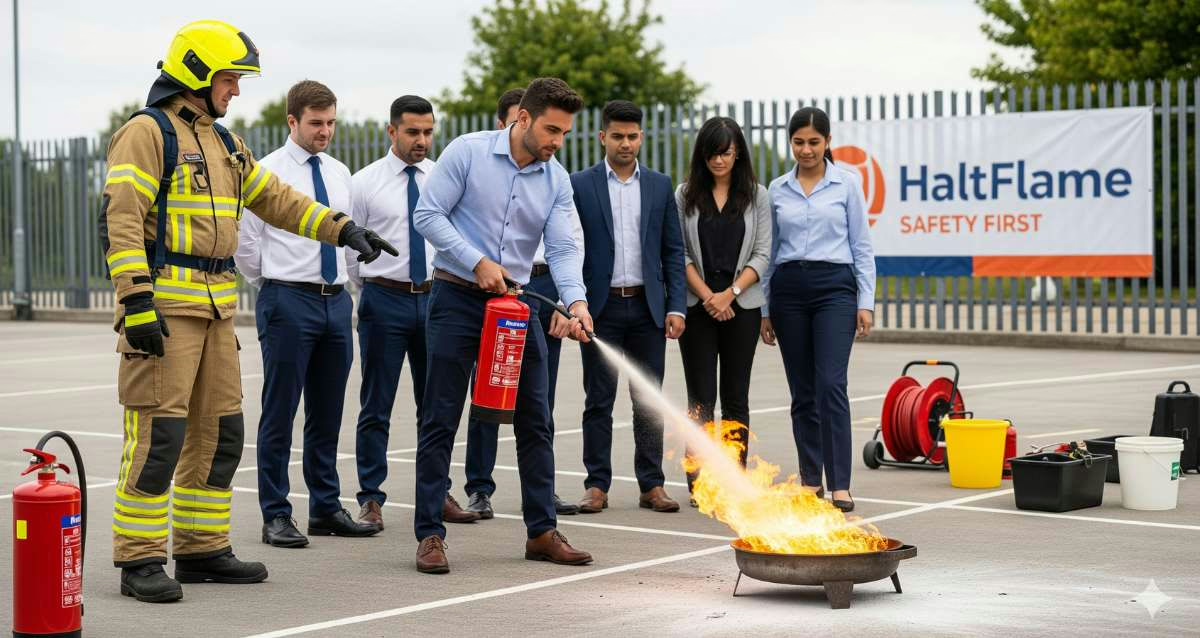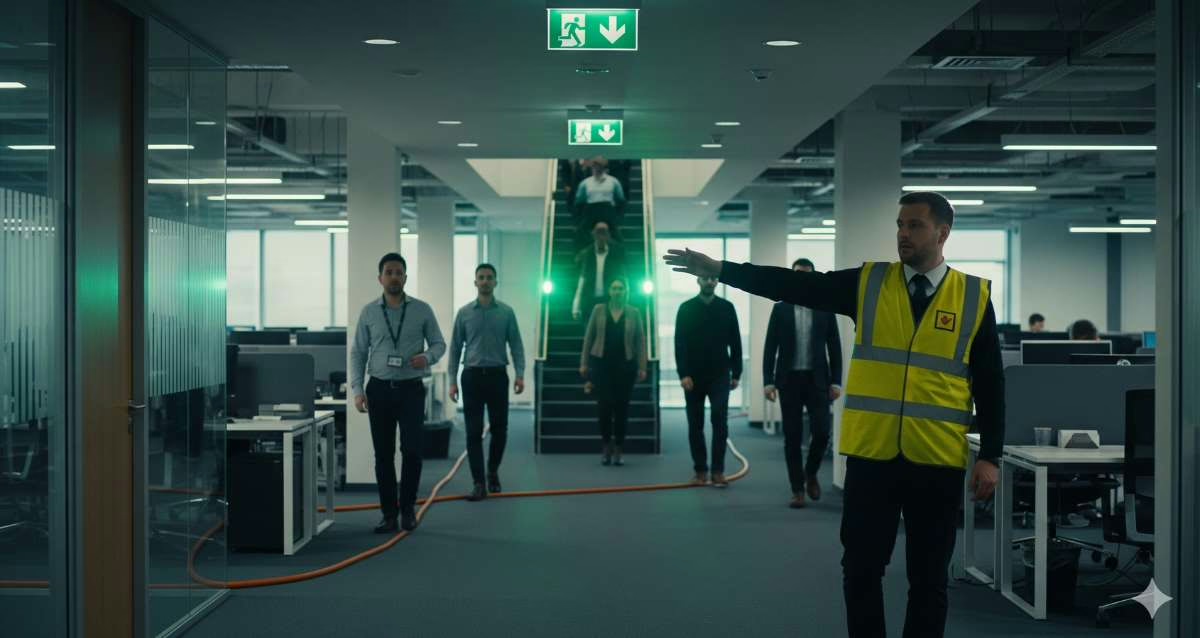
Fire is one of the most powerful natural elements, capable of providing warmth, cooking food, and driving industry. Yet, uncontrolled fire poses immense risks to life, property, and the environment. Every year, thousands of families and businesses suffer devastating losses due to fires that could have been prevented with better preparation. At HaltFlame, our mission is to help you understand the core fire safety essentials you need to stay safe, secure, and prepared.
In this in-depth guide, we will explore fire prevention strategies, safety equipment, workplace and home preparedness, and the most important steps you can take to protect what matters most.
Why Fire Safety Matters
Fire safety isn’t just about compliance with regulations or installing a smoke alarm. It’s about safeguarding your loved ones, your livelihood, and your peace of mind. Fires can spread rapidly—sometimes within just two minutes—and a delayed response can mean the difference between a minor incident and a total disaster.
-
Statistics highlight the urgency: According to global fire safety reports, residential fires cause thousands of deaths annually. Business fires result in billions in losses each year.
-
Common causes include unattended cooking, faulty wiring, overloaded sockets, flammable storage, and human negligence.
-
Preventable risks: Most fire outbreaks can be prevented by following essential safety practices, using proper equipment, and maintaining awareness.
Core Fire Safety Essentials
1. Fire Detection and Early Warning Systems
The first line of defence in any fire emergency is early detection.
-
Smoke Alarms: Install smoke detectors in every bedroom, hallway, and common area. Test monthly and replace batteries annually.
-
Heat Detectors: Useful in kitchens and garages where smoke alarms may trigger false alerts.
-
Smart Fire Detection Systems: Modern devices can connect to mobile apps, instantly alerting you even when you’re not home.
Tip: Never disable alarms when they trigger falsely—adjust placement instead.
2. Fire Extinguishers: Your First Response Tool
Having the right fire extinguisher can stop a small fire from escalating into catastrophe.
-
Types of Extinguishers:
-
Class A: For wood, paper, fabric.
-
Class B: For flammable liquids.
-
Class C: For electrical fires.
-
Class K: For kitchen grease fires.
-
-
Placement: Keep extinguishers in kitchens, garages, workshops, and near electrical panels.
-
Training: Ensure family members or employees know the PASS technique (Pull, Aim, Squeeze, Sweep).
3. Fire Blankets and Suppression Tools
Fire blankets are essential for smothering small fires, especially in kitchens. They are simple to use and effective at cutting off oxygen to flames. For businesses, suppression systems (like sprinklers or chemical agents) provide an automatic layer of protection.
4. Escape Planning and Drills
Knowing what to do during a fire is just as critical as prevention.
-
Create an Escape Plan: Every family member or employee should know at least two exits from every room.
-
Meeting Point: Decide on a safe outdoor spot where everyone should gather.
-
Practice Drills: Conduct home fire drills twice a year; workplaces should schedule regular evacuation practices.

5. Safe Storage of Flammable Materials
Flammable liquids, cleaning agents, and fuels should never be stored casually.
-
Use Proper Containers: Only store flammables in approved containers with safety caps.
-
Keep Away from Heat: Store in cool, dry areas away from direct sunlight or heat sources.
-
Label Clearly: Avoid accidents by labelling chemicals and fuels properly.
6. Electrical Safety Measures
Electrical malfunctions are among the leading causes of fires.
-
Regular Inspections: Have a qualified electrician inspect wiring, sockets, and breaker boxes.
-
Avoid Overloading Outlets: Use surge protectors and avoid daisy-chaining extension cords.
-
Appliance Care: Unplug devices when not in use and replace frayed cords immediately.
7. Kitchen Fire Safety
The kitchen is the most common place where fires start.
-
Never Leave Cooking Unattended: Even a few moments can lead to disaster.
-
Use Timer Alerts: Remind yourself when cooking oils or ovens are on.
-
Have a Class K Extinguisher Handy: Especially if you deep-fry food.
-
Avoid Water on Grease Fires: Use baking soda, a fire blanket, or an extinguisher.
8. Workplace Fire Safety Essentials
Businesses face unique fire risks due to equipment, chemicals, and occupancy levels.
-
Install Fire Sprinklers: Automatic systems suppress fires before they spread.
-
Emergency Lighting: Ensures safe evacuation during power outages.
-
Employee Training: Staff should know how to use extinguishers, follow evacuation routes, and assist customers.
-
Compliance with Fire Codes: Regular inspections ensure legal and insurance protection.
9. Fire Safety for Children and Vulnerable Groups
Children, elderly family members, and people with disabilities need tailored fire safety plans.
-
Teach Children Early: Show them how alarms sound and where to go.
-
Assistive Devices: Use vibrating alarms or flashing lights for hearing-impaired individuals.
-
Assign Helpers: Ensure someone is responsible for assisting vulnerable persons during evacuation.

10. Outdoor and Seasonal Fire Safety
Fire risks extend beyond the walls of your home.
-
Barbecues and Grills: Keep them away from walls, decks, and dry vegetation.
-
Fireworks Safety: Always supervise, keep water nearby, and avoid illegal fireworks.
-
Wildfire Preparedness: Create a defensible space around your home by clearing dry brush and storing firewood away.
Building a Culture of Fire Safety
Fire safety should not be a one-time checklist but an ongoing habit. Whether at home or in the workplace, creating a safety-first culture means:
-
Conducting regular fire safety training.
-
Assigning fire wardens in businesses.
-
Updating emergency contact lists.
-
Keeping all safety equipment maintained and functional.
The Role of Technology in Modern Fire Safety
Advancements in fire safety technology are helping save more lives.
-
Smart Alarms that send alerts to your phone.
-
AI-powered Fire Detection in security cameras.
-
Automatic Gas Shut-Off Valves to prevent explosions.
-
Internet-Connected Sprinkler Systems for faster suppression.
By integrating these tools, homes and businesses gain an added layer of proactive protection.

Fire Safety Essentials Checklist
Here’s a quick reference list you can print and keep visible:
-
Install smoke and heat detectors in every key area.
-
Place fire extinguishers on each floor.
-
Keep a fire blanket in the kitchen.
-
Maintain safe storage for flammables.
-
Inspect electrical systems regularly.
-
Create and practice an escape plan.
-
Train family members and employees.
-
Keep emergency contacts visible.
-
Maintain outdoor fire safety habits.
-
Stay updated with the latest fire safety technology.
HaltFlame’s Commitment to Fire Safety
At HaltFlame, we believe prevention, preparedness, and education are the cornerstones of true fire protection. By embracing these fire safety essentials, you can drastically reduce risks, protect your family, employees, and assets, and enjoy greater peace of mind.
Fire safety is everyone’s responsibility. Start today by assessing your home or workplace, investing in the right equipment, and practising your plan. Small steps now can prevent irreversible tragedies later.

